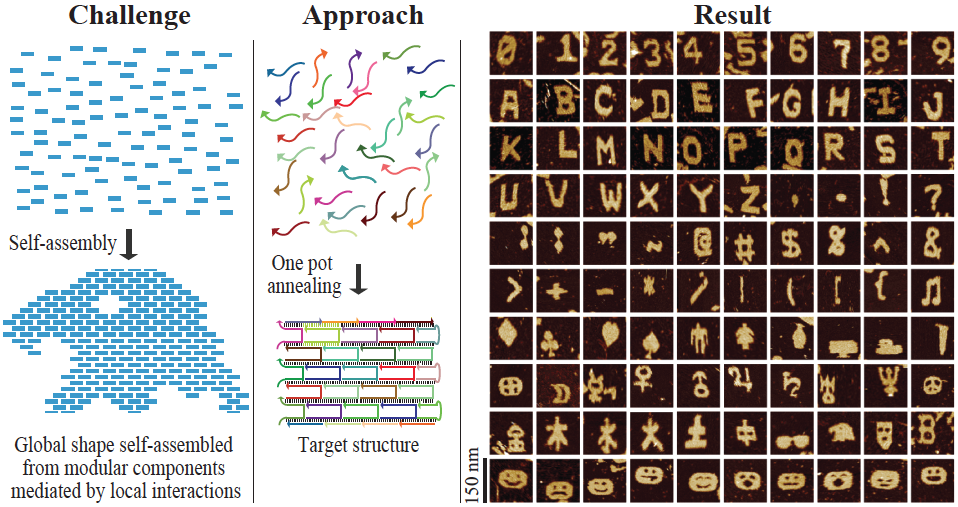
Bryan Wei, Mingjie Dai, Peng Yin
Nature. doi: 10.1038/nature11075, 623-626 (2012).
Downloads: PDF, 5 pages.
Abstract:
Programmed self-assembly of strands of nucleic acid has proved
highly effective for creating a wide range of structures with desired
shapes. A particularly successful implementation is DNA
origami, in which a long scaffold strand is folded by hundreds of
short auxiliary strands into a complex shape. Modular
strategies are in principle simpler and more versatile and have been
used to assemble DNAor RNA tiles into periodic
and algorithmic two-dimensional lattices, extended ribbons and
tubes, three-dimensional crystals, polyhedra and simple
finite two-dimensional shapes. But creating finite yet complex
shapes from a large number of uniquely addressable tiles remains
challenging. Here we solve this problem with the simplest tile form, a
‘single-stranded tile’ (SST) that consists of a 42-base strand of DNA
composed entirely of concatenated sticky ends and that binds to four
local neighbours during self-assembly. Although ribbons and tubes
with controlled circumferences have been created using the SST
approach, we extend it to assemble complex two-dimensional shapes
and tubes from hundreds (in some cases more than one thousand)
distinct tiles. Our main design feature is a self-assembled rectangle
that serves as a molecular canvas, with each of its constituent SST
strands—folded into a 3nm-by-7nm tile and attached to four
neighbouring tiles—acting as a pixel. A desired shape, drawn on
the canvas, is then produced by one-pot annealing of all those
strands that correspond to pixels covered by the target shape; the
remaining strands are excluded. We implement the strategy with a
master strand collection that corresponds to a 310-pixel canvas, and
then use appropriate strand subsets to construct 107 distinct and
complex two-dimensional shapes, thereby establishing SST assembly
as a simple, modular and robust framework for constructing
nanostructures with prescribed shapes from short synthetic DNA
strands.
Supplementary material:PDF, 92 pages

Back to publications